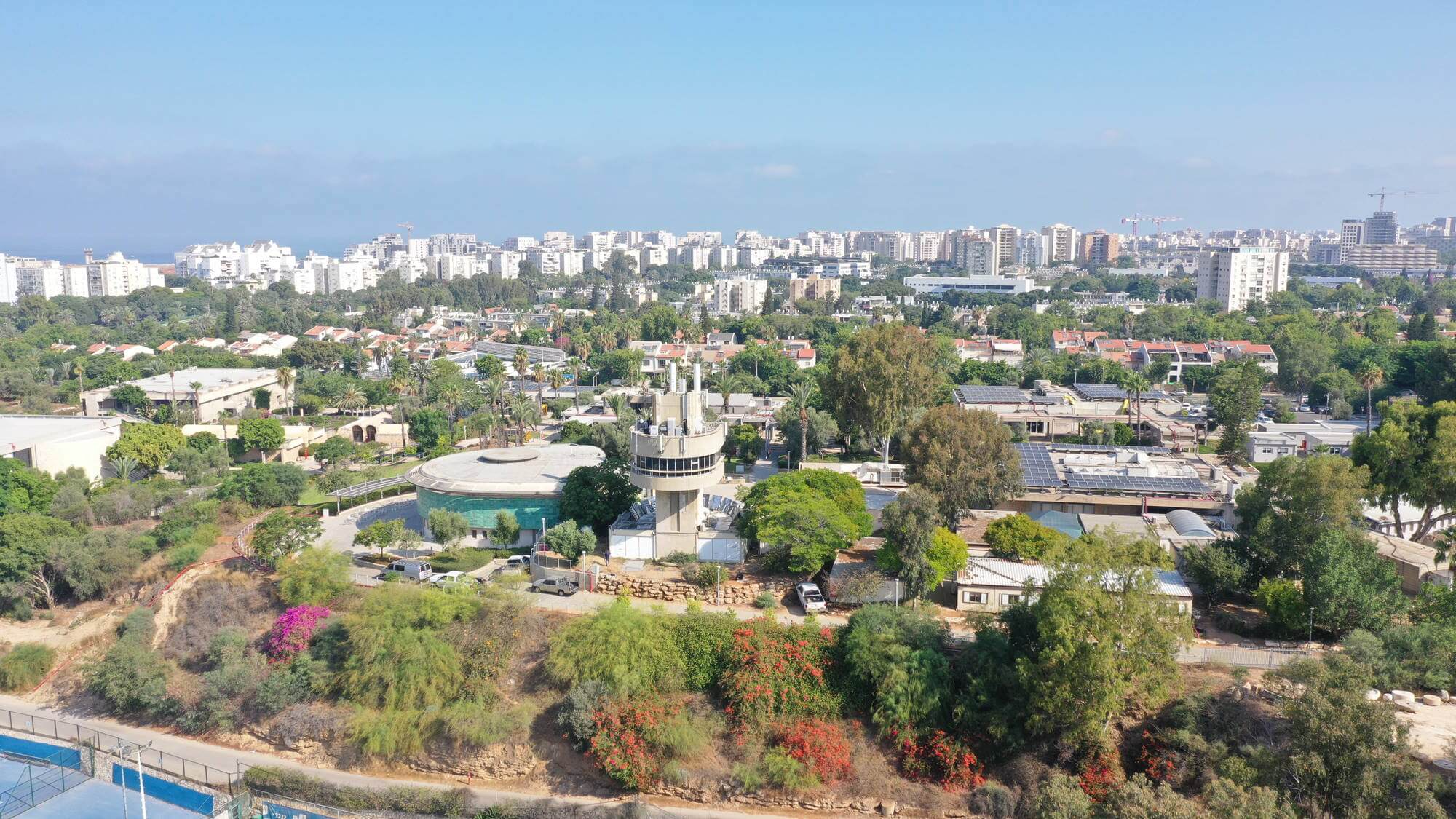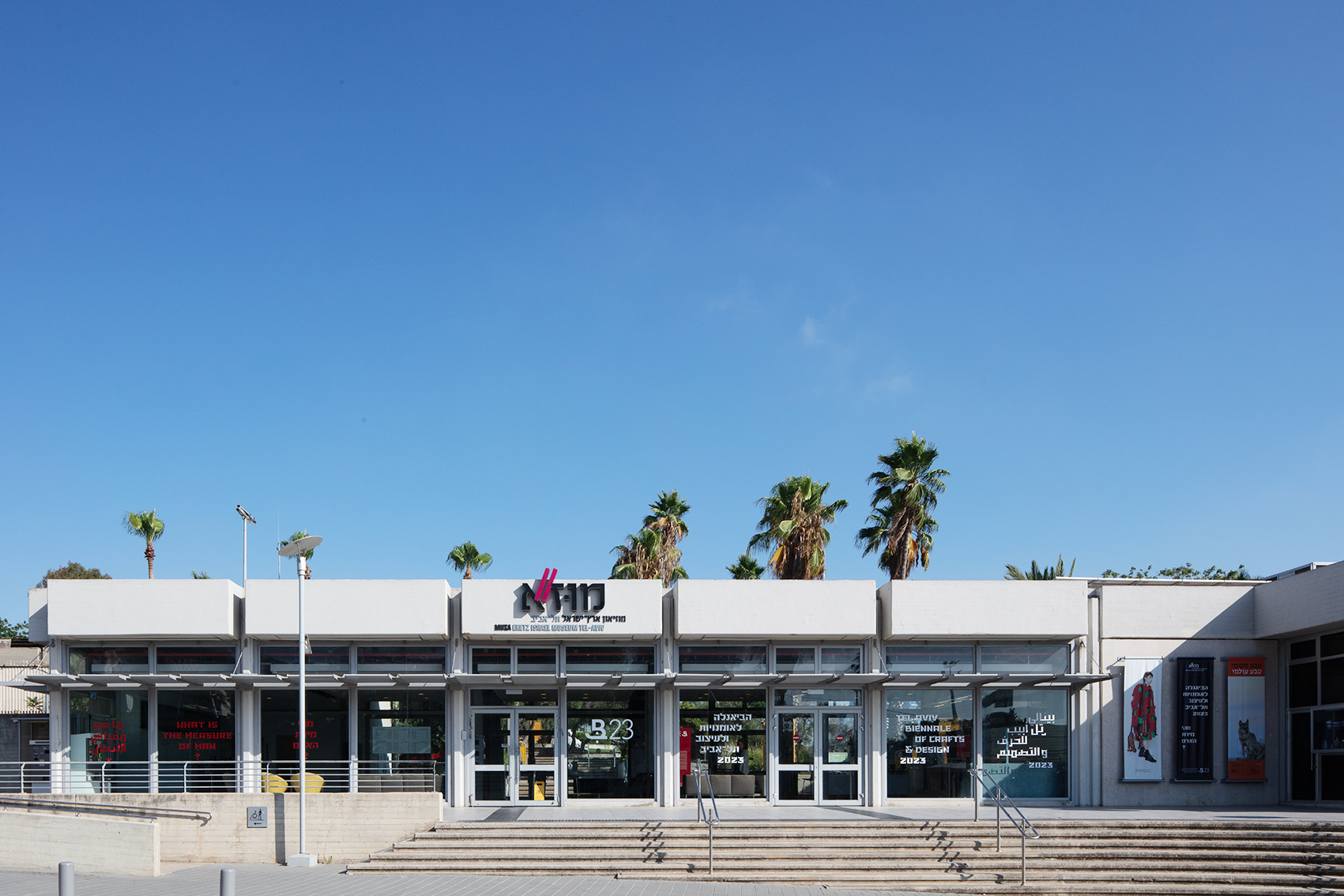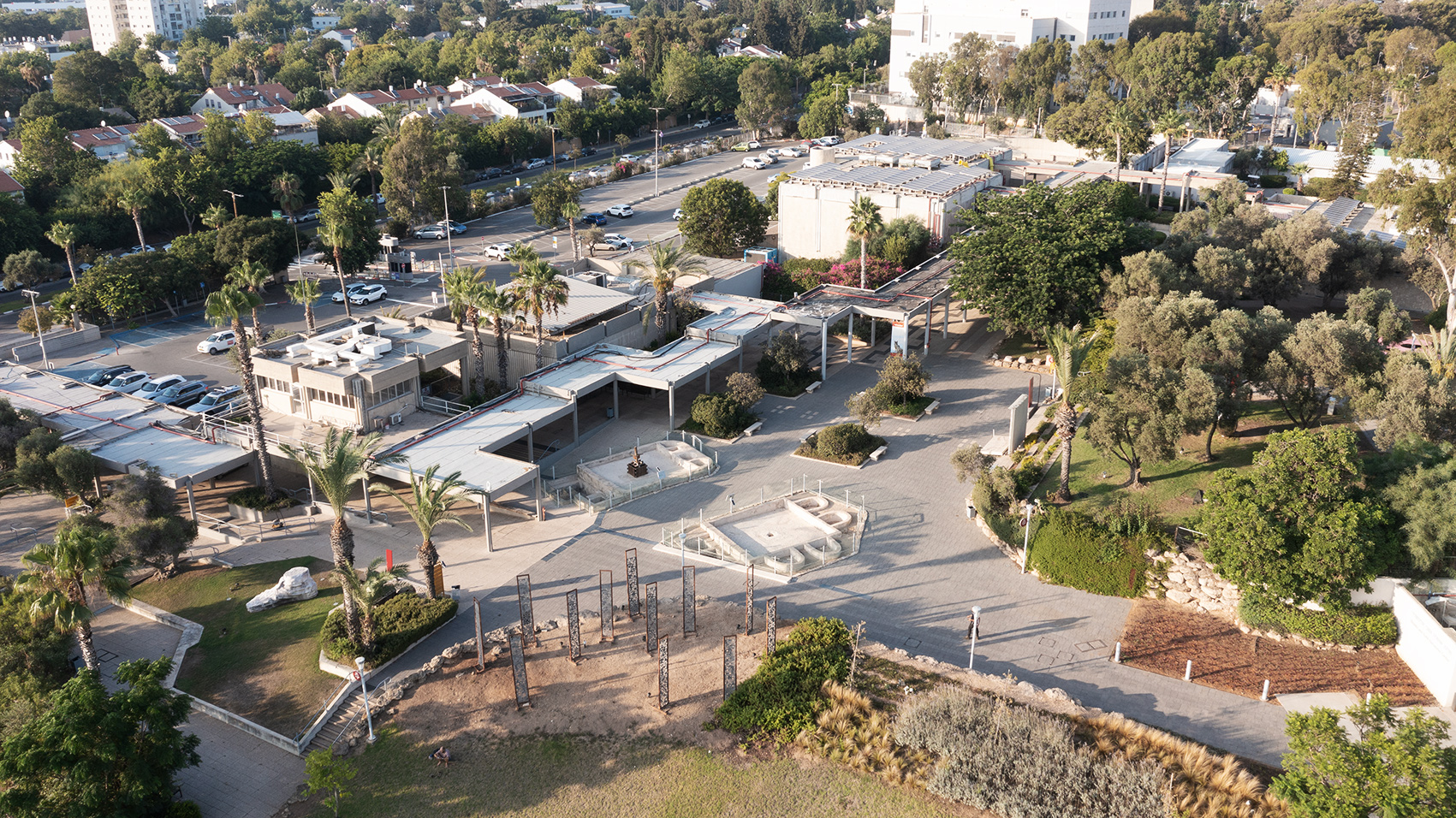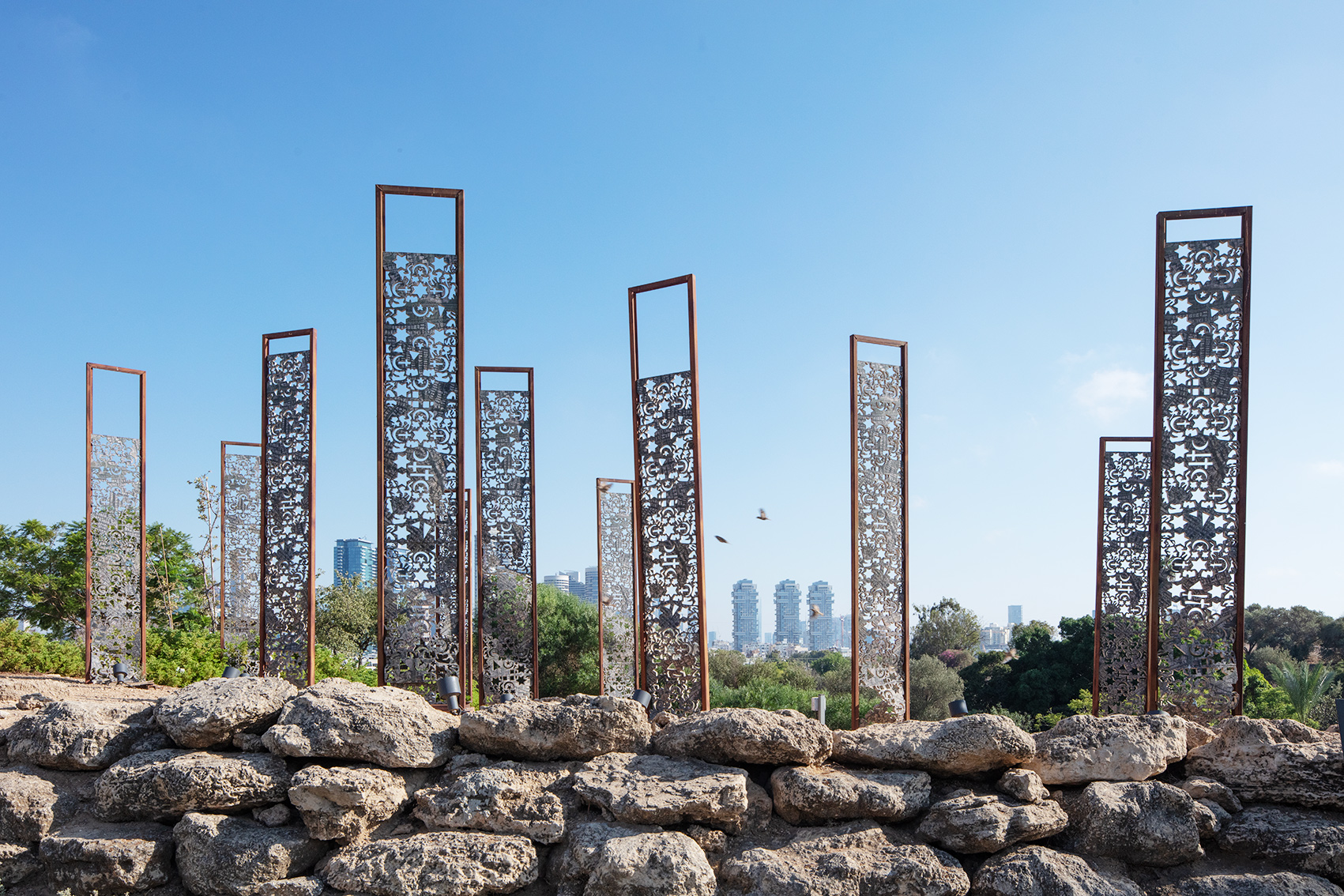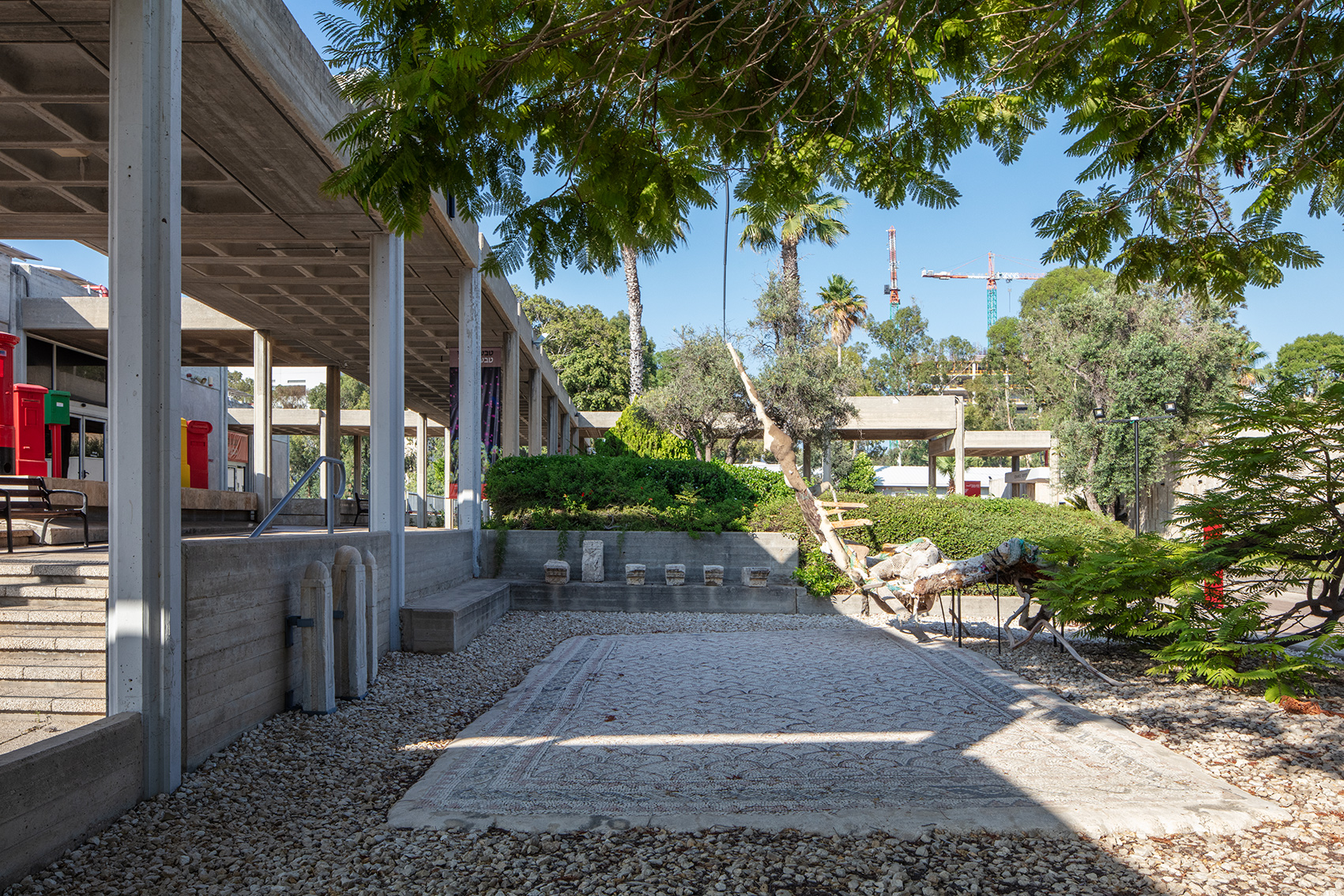MUZA, Eretz Israel Museum, Tel Aviv, is a multi-disciplinary museum focusing on the material culture of the local region, past and present. The museum’s unique and wide-ranging exhibits position it in the first rank of museums in Israel. Its unique and variegated character have made it a cultural center attracting visitors of all ages from all over Israel and around the world.
MUZA is the home of archaeology, ethnography, photography, folklore and local history collections that are among the largest and most important in Israel. It works towards the formation of contemporary connections between past and present and between different fields of creative activity and study. One of its unique features is the exhibitions and research into crafts, including investigation of the tension between art and crafts. As such it formulates an ongoing discourse promoting the close connection between matter and spirit that has always been integral to human culture.
The museum covers a large area adjacent to the Ramat Aviv section of Tel Aviv, with the Yarkon river flowing to its south, and has views of the harbor and the city skyline. Distributed around the grounds of the museum are the pavilions in which its collections are stored and displayed. They include rare and unique items. Alongside the pavilions that house the various permanent exhibitions are also “white cube” spaces where rotating exhibitions on different topics are displayed, in dialogue with the museum’s cultural vision and its permanent exhibition. Over the years some of these have become iconic cultural events attracting a large and diverse public, for example the “Biennale for Crafts and Design”, “Photomenta” and the “Local Testimony” photojournalism exhibition.
One of the museum’s unique features is its open spaces that invite visitors to stroll around and take the opportunity to spend time within nature inside the city. On top of the hill at the center of the museum stands Tell Qasile, the first archaeological site to be excavated in the State of Israel, containing remains of ancient settlements dating back more than 3,000 years. Around the museum’s gardens are found a wealth of archaeological exhibits including ancient mosaic floors from all over Israel and ancient wine presses, as well as a crafts arcade, an olive oil press and a reconstructed flour mill.
As a multi-faceted cultural center, MUZA operates performance spaces, a theater and a unique planetarium. It also takes part in joint events with other cultural institutions and hosts plays, lectures, shows and social and cultural events, taking an active part in the shaping of local culture and community.
During the last five years MUZA has been undergoing an unprecedented renewal process as part of the new management’s master plan. The renewal process includes the construction of a 9,000 sq. m. museum garden which will be open to the general public and make the museum an integral part of the fabric of life in the city. On the north side of the museum a city square will be constructed connecting the museum to the Ramat Aviv Hayeruka neighborhood and a core building will be constructed in the center of the museum including a new lobby, extensive gallery space, education buildings, a store, a cafe and a pedestrian bridge looking south towards the city.
History
MUZA, Eretz Israel Museum, Tel Aviv, was founded in 1958 on a large tract of land in North Tel Aviv. Originally called Haaretz Museum, in 1983 its name was changed to Eretz Israel Museum. In 2015 the Museum went through a rebranding process and its name became “MUZA – Eretz Israel Museum, Tel Aviv”.
The museum was constructed as a complex of pavilions set in gardens and open spaces overlooking the surrounding area, inspired by the European Landesmuseum (National Museum) concept. The original buildings were planned and designed by Werner Joseph Wittkower, one of the leading architects of the period, and today are listed buildings. Each one has a unique structure and reflects the narrative of the collection held and exhibited within it. The first pavilion to be dedicated was the Glass Pavilion in 1959, followed by the others – the Kadman Numismatic Pavilion (1962), the Ethnographic and Folklore Pavilion (1963), the Ceramics Pavilion (1966), the Man and His Work Center (1982), the Nehushtan Pavilion (1983), the Alexander Pavilion of Postal History and Philately (1998), and the Rothschild Center (2006).
The motive for the museum’s foundation was to create a home for the glass collection of Dr Walter Moses, a Jewish industrialist of German extraction, born in Berlin in 1892, who immigrated to Israel in 1926. Alongside his wide-reaching communal activities in Germany and Israel, Moses was a collector of antiquities and books on art, history and archaeology. Over the years he purchased many items, especially antique and rare glass vessels telling the story of the region of Israel over millennia. For him, the ancient artworks reflected the unique multi-cultural character of the region and he saw this heritage as the basis for its continued existence and the construction of the future and culture of the State of Israel that was coming into being. He maintained his extensive collection in the apartment on Bograshov St. in Tel Aviv, where he lived alone, and for many years it became a kind of private museum of the country’s history and archaeology.
In December 1952 Moses and the Tel Aviv Municipality signed a contract in which Moses assigned the rights to his collection (then valued at over a million dollars) to the city of Tel Aviv and its residents, on condition that it would set up a museum to house the collection, which would be open to the general public. In his will Moses referred not only to the material aspect of his decision but also determined the museum’s name and spiritual vision. He laid down that the museum should be established in the city of Tel Aviv and become a cultural and academic institution of international standing, promoting both adult and juvenile education and making archaeology and folklore essential aspects of contemporary culture.
Moses’ vision for the foundation of the museum was derived from the Landesmuseum (National Museum) model and the museums of folklore and everyday life that sprang up in Europe in the 19th century as part of the nationalist resurgence. These museums displayed national ways of life and material culture from antiquity to the present day, as part of the search for roots and connection to the land. The museum’s site is adjacent to the first archaeological tell excavated in the State of Israel, overlooking the city and the open spaces surrounding it. The selection of this site was not accidental: it reflects the search for roots and the deep and ancient connection between humans and the earth, and between matter and spirit.
Moses died suddenly in 1955 and never saw the realization of his vision. Nevertheless, the museum became a reality and carries on Moses’ legacy on a daily basis, as one of the largest and most influential museums in Israel. Ever since its foundation MUZA has been working on the conservation, extension and accessibility of its collections, some of which are among the largest and most important in the world. It also acts as a contemporary multi-disciplinary cultural institution active in connecting the past to the present and the Museum to the community and to society.
In recent years under its current management the Museum is undergoing a process of renewal on an unprecedented scale, including the construction of new buildings, among them a new foyer, huge galleries for rotating exhibitions, laboratories, offices, a shop and a cafe. A 90,000 sq. m. park which will be open to the public is also under construction. The MUZA Park will enhance the Museum’s connection to the city and its residents, and is due to open (partially) in late summer 2023.

